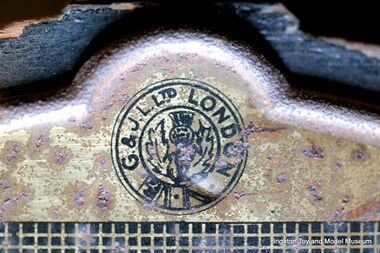Thistle
| Toy Brands and Manufacturers |
|---|
Thistle |
| 1947 - |
An earlier incarnation of the "Thistle" logo, as used on an older G&J Lines lorry radiator [image info]
Thistle was the brand-name used by Lines Brothers (Canada).
Trade barriers
At the time it was common for countries to put large inport tariffs onto imported goods such as toys, in order to protect their indigenous industries from being swamped by cheaper imports from larger foreign companies who (exporting worldwide) would also benefit from international economies of scale. A company with a good international export network could make decent profits in ther own home market and treat export revenue as an "extra", which would tend to lead to the temptation to "dump" goods into a foreign market at not much more than cost, to obtain extra sales in an "unimportant" market by undercutting the local toymakers.
Large toymakers who felt that their products ought to be on sale in foreign markets would typically get around these import barriers by setting up local subsidiary companies, that might "make" toys locally by having the parts (castings, etc.) shipped in from the parent company, and assembling and painting them in a small local factory.
Thistle as a semi-independent toymaker
However, for Canada, Lines Brothers obviously decided (perhaps to placate local politicians?) that a simple "local-assembly" operation wasn't going to be enough, and that they needed their Canadian offshoot company to be as genuinely Canadian and autonomous-looking as possible, resulting in their buying ther own wood-mill, and locally dropping the "Tri-Ang" name in favour of "Thistle", a brandname and trademark that had previously been used by G and J Lines.
The Canadian replacement for the usual triangular logo with a central "L" was a similar triangular logo with a central "thistle" design, and toys were localised wherever possible – delivery lorries that would have been lettered "Tri-Ang Transport" in the UK, if produced in Canada, were lettered "Thistle Transport" instead.
Thistle, knowing that the local market's needs werent necessarily always met by existing Tri-Ang designs, also ended up with their own local R&D department.



